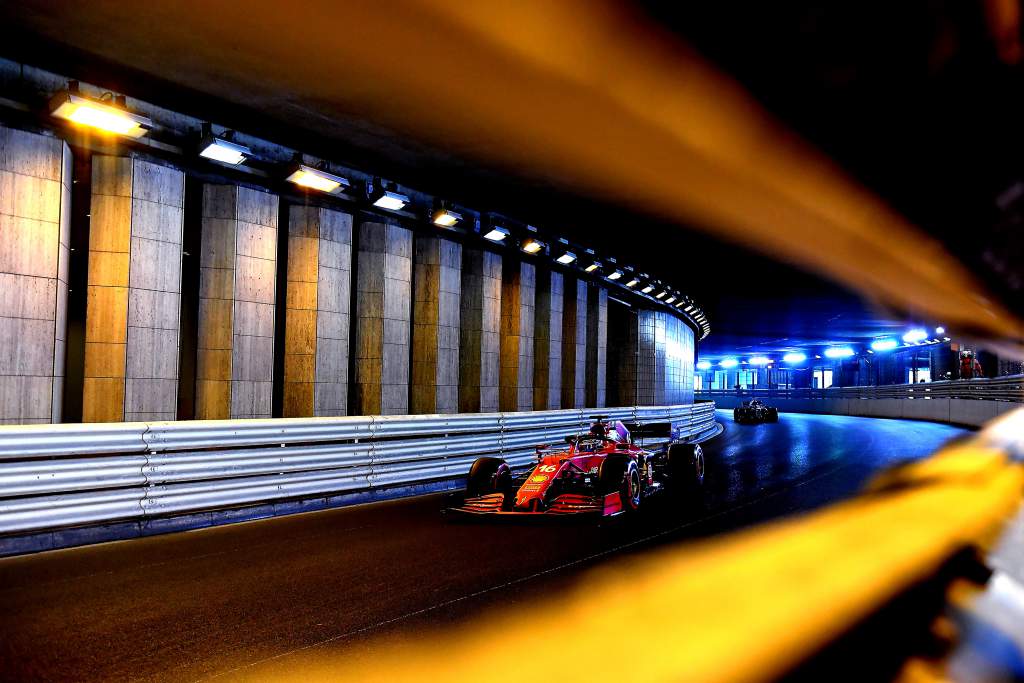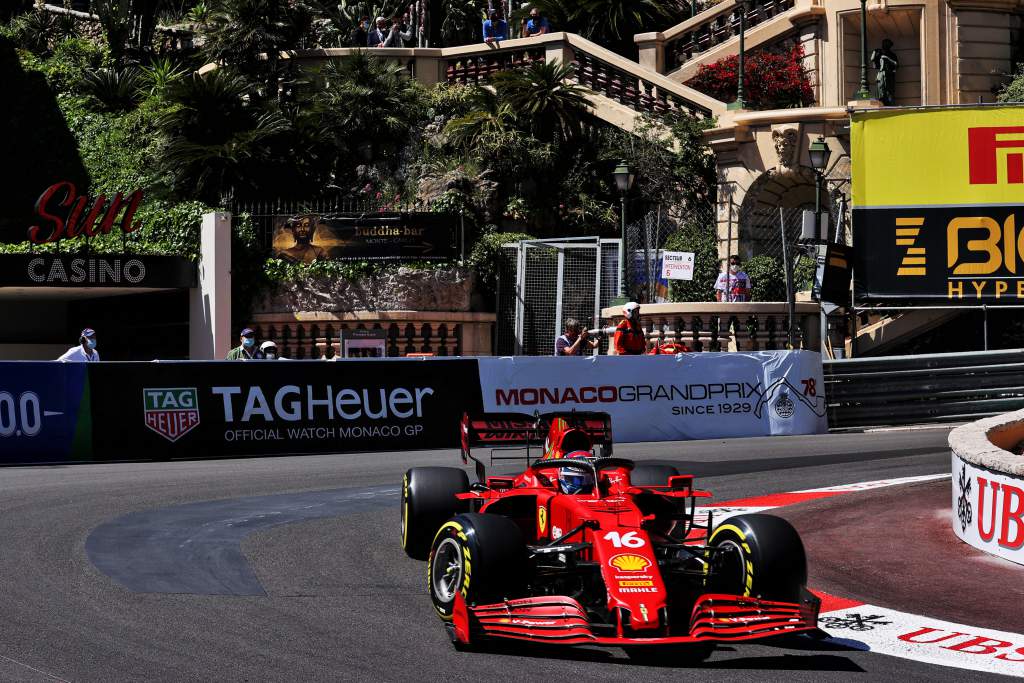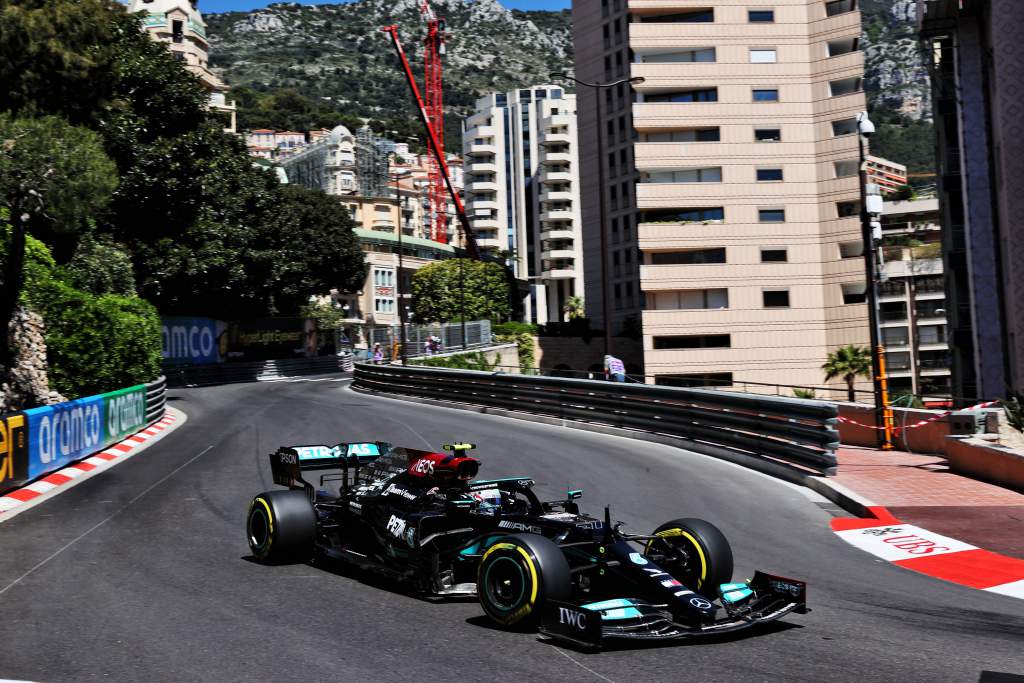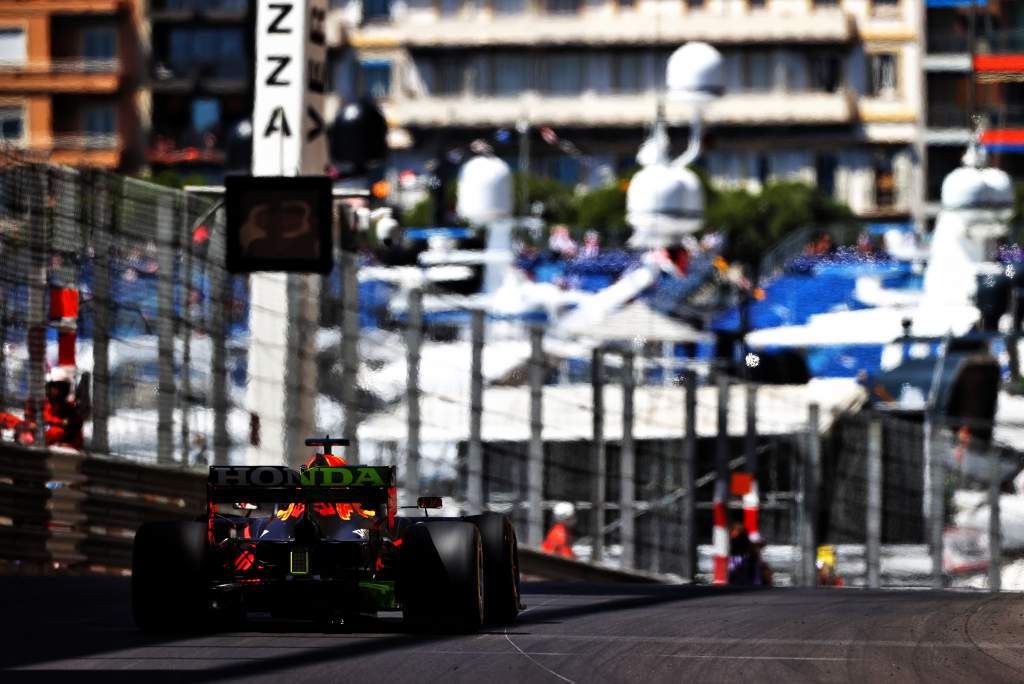Up Next

Forget the headline numbers but take heed of the headline news: Ferrari is genuinely very competitive around Monaco. Not as fast as the Thursday afternoon fastest times make it look, but in the mix with Mercedes and Red Bull.
It didn’t surprise Lando Norris, for one. “We know where they’re quick,” he said of McLaren’s close rivals, “and where they’re not – and this track will treat them very kindly. I texted Carlos [Sainz] last week and said I thought he had a good chance of winning this weekend.”
“Surely not,” we hear you say. “Surely, this is just another flattering first practice day for Ferrari when they always run with a little more power and a little less fuel than Merc and Red Bull and therefore look artificially competitive.”

There is an element of that, for certain. A GPS overlay of Charles Leclerc’s session-heading time with that of Lewis Hamilton shows the Ferrari slower out of Ste Devote but 10kph faster by the top of the hill. That’s an enormous difference and it screams “different power” even more than “less fuel weight”.
But… Leclerc’s advantage of 0.39s over Hamilton would require the Mercedes to be carrying 50-60% more fuel than the Ferrari, even if they were cars of equal performance. There’s no way Mercedes is carrying that much extra fuel. Both teams were anyway running multiple consecutive laps even during the “low fuel” runs, reducing the likely practical difference between the chosen loads.
Perhaps it ran a little less fuel and a significantly higher engine mode, but the Ferrari was also working visibly well, with a fantastically responsive front end, a trait that’s absolute gold dust around Monaco’s slow-speed, short-duration corners.
That’s what Norris is referring to. The Ferrari has been super-quick in such corners all year, with apex speeds invariably significantly higher than those of the McLaren, which typically derives a similar laptime in a very different way – down the straights and through high-speed corners, neither of which give much of a payback at Monaco. With no long straights or fast corners to punish the Ferrari, it’s suddenly up there with Red Bull and Mercedes.

Leclerc led a Ferrari 1-2 in the overall FP2 times despite missing virtually all of the morning session to a gearbox problem. He was only fractionally faster than team mate Sainz, with Hamilton’s third-fastest time all-but-equalled by Max Verstappen’s Red Bull. There were no long runs worthy of the name as Mick Schumacher’s accident brought the session to a premature close: Valtteri Bottas had got six laps into his soft-tyred long run, Sainz four laps into his. Of the others, Hamilton had made only one flying lap on the medium tyre, Leclerc was still in the pits, Verstappen and Perez were two and one laps respectively into their runs.
What can we deduce from such sparse pickings? More than might be imagined. Because of the inevitable traffic congestion and the tricky warm-up of the tyres – getting the fronts and rears to come in at the same time, so that the fronts are warm enough at the start of the lap but the rears not too hot by the end is always a challenge here – everyone was doing multiple laps. From these some clear patterns emerged.
Whether those patterns hold into qualifying and the race remains to be seen – and will depend on whether the two title-contending teams can iron out the shortfalls they found today. The Ferrari, by contrast, was dialled pretty much straight in. It’s got a strong front end – and it can seemingly more easily get a balance of tyre temperature between front and rear axles.
“I feel like we still have a lot of work to do,” summarised fifth-quickest Valtteri Bottas. “I’m lacking the front end. We’ve had similar issues some tracks mid-corner, but these slow corners if you don’t have the feeling of the front whether it’s going to turn in or not you’re going to lose quite a lot of time.

“Also it fees quite stiff; all the bumps and cambers here are upsetting it… We need to work hard also on getting the tyre performance on the first lap which I couldn’t do today. Some cars might have a bit of an advantage in that respect.”
Usually, he’d be talking about Red Bull when he made such a comment. Here that wasn’t the case. The RB16B could get front tyre temperature quicker than the Mercedes, just like normal. But it couldn’t hang onto tyre performance for a full hot lap; they’d invariably be too hot by sector three.
Verstappen was only the fifth-fastest through the final sector, dropping almost 0.3s to Leclerc just in the short distance between the Swimming Pool exit and start-finish line. Even compared to Bottas he dropped 0.27s there on their respective best laps. To protect the rears required a set-up which lost the car its usual slow corner agility.
“We are too slow, and not just a little bit,” summarised Verstappen. “Our optimum sectors were quite a way off and it didn’t feel too great to drive and it all takes too long to come together. I’m surprised at Ferrari but I think it shows we are very weak – and that’s making the offset so big.”

Team boss Christian Horner seemed less alarmed. “We missed tyre window a little and so we have a bit too much understeer for Max’s liking,” he said. “I think it just needs a bit of a tidy up and we’ll be right there.”
So the Mercedes couldn’t get instant front tyre performance into sector one, the Red Bull couldn’t maintain peak performance into sector three. But the Ferrari was seemingly perfectly balanced in its tyre usage.
| Car | Sector 1 | Sector 2 | Sector 3 | Best theoretical lap |
| Ferrari | 18.813s | 33.603s | 18.984s | 1m10.4s |
| Mercedes | +0.287% | +1.163% | +0.105% | +0.563% |
| Red Bull | +1.142% | +0.679% | +1.327% | +0.973% |
When looking at the above numbers, first of all bear in mind that the Ferrari’s performance here is definitely flattered by chosen engine power and fuel weight. Also, there is a certain random spread to the patterns because of a much bigger variation than normal in tyre age when the best sectors were set because of the combination of multiple lap runs and traffic.
But it all paints a picture of a very keyed-in Ferrari and difficulties for the two cars which around a conventional track are usually half-a-second per lap ahead.
Hamilton, while acknowledging Ferrari’s speed, didn’t seem unduly concerned. “Around here you’re experimenting a lot,” he said, “dialling your driving style in, knowing where you can and can’t push, where you’re going to have to give up some and you have to work with the car. But the car is basically good. There will be some changes to come after we analyse today.”

Someway behind the top three teams, the picture suggested McLaren as best of the rest from AlphaTauri, the new-floor Alfa just ahead of Aston and Alpine.
Sebastian Vettel looked convincingly quicker all day at Aston than Lance Stroll for the first time this year, Daniel Ricciardo’s struggle continues and Nikita Mazepin was for once quicker than Mick Schumacher. Yuki Tsunoda’s time is not representative as the Monaco rookie spent much of the session in the AlphaTauri garage after tagging the wall.
Saturday and Sunday will for sure paint a different picture to Thursday. But don’t be surprised if the red cars remain right in the thick of things.
FP2 fastest times
1. Leclerc Ferrari 1m11.684s
2. Sainz Ferrari 1m11.796s
3. Hamilton Mercedes 1m12.074s
4. Verstappen Red Bull1m 12.081s
5. Bottas Mercedes 1m12.107s
6. Norris McLaren 1m12.379s
7. Gasly AlphaTauri 1m12.498s
8. Perez Red Bull 1m12.708s
9. Giovinazzi Alfa Romeo 1m12.746s
10. Vettel Aston Martin 1m12.982s
11. Raikkonen Alfa Romeo 1m13.065s
12. Alonso Alpine 1m13.175s
13. Stroll Aston Martin 1m13.195s
14. Ocon Alpine 1m13.199s
15. Ricciardo McLaren 1m13.257s
16. Russell Williams 1m13.509s
17. Latifi Williams 1m13.593s
18. Mazepin Haas 1m14.407s
19. Schumacher Haas 1m14.416s
20. Tsunoda AlphaTauri 1m14.829s




